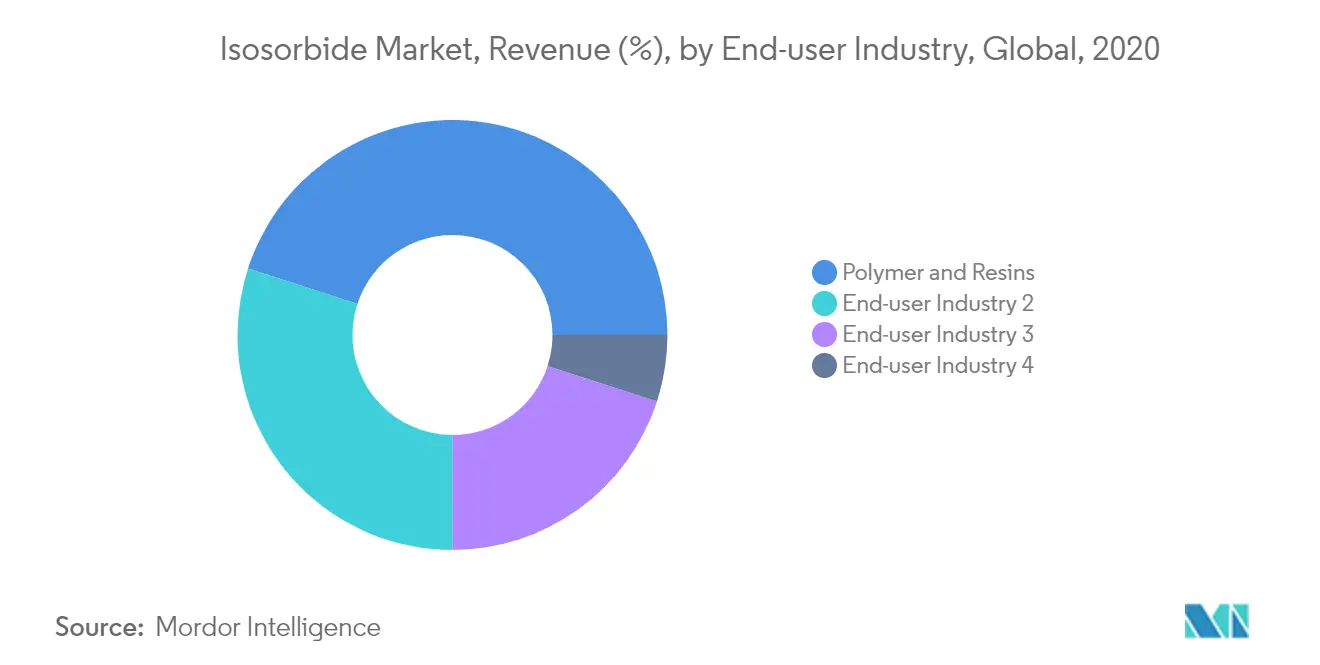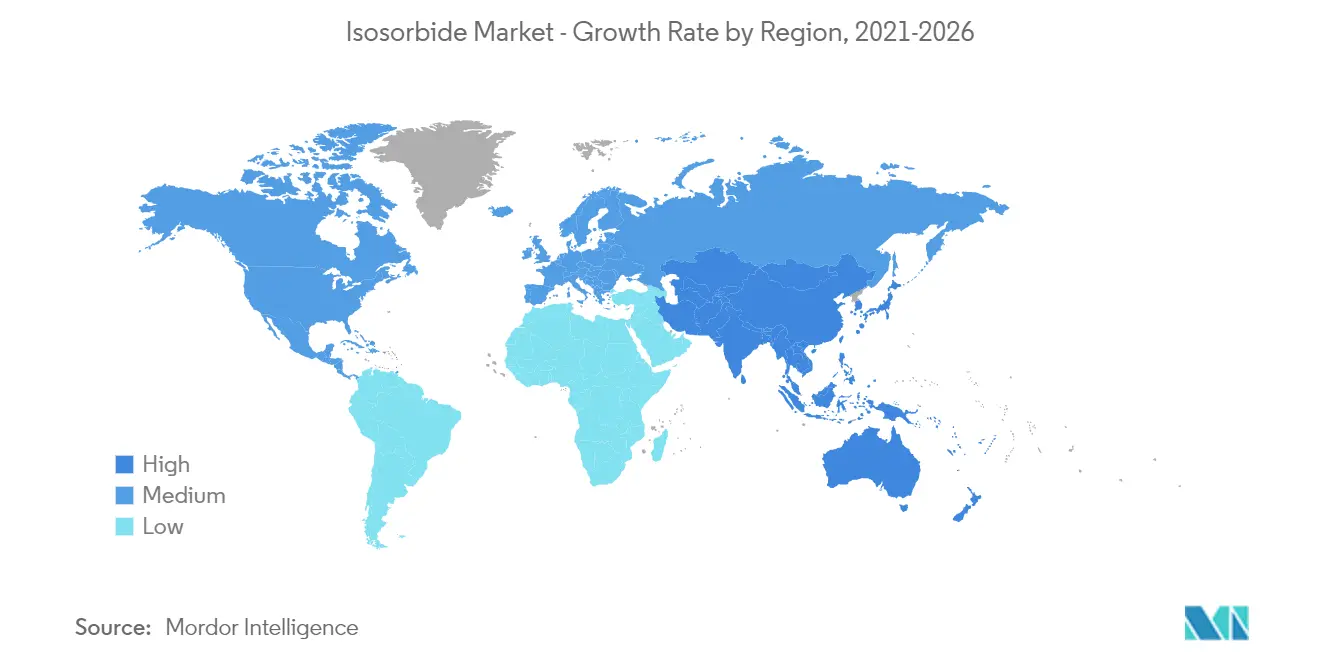Market Trends of Isosorbide Industry
This section covers the major market trends shaping the Isosorbide Market according to our research experts:
Increasing Demand from the Polymer and Resins Segment
- Isosorbide is a white heterocyclic chemical compound from the group of diols, containing two fused furan rings. It is mainly derived from the catalytic hydrogenation of glucose.
- The growing demand for polymers and resins to manufacture products for various applications in medical, electronic gadgets, and the automotive industry is increasing the demand for isosorbide and propelling its growth.
- According to OICA, about 92.18 million vehicles were produced globally in 2019 and has reached about 77.62 million vehicles in 2020, registering a decline rate of about 15.8%, thus led to a decrease in the demand for isosorbide polymer and resins-based automotive parts such as interior console and dashboard, exterior radiator grille, etc.
- Isosorbide is eco-friendly and non-toxic in nature, as it is produced from raw materials, like starch obtained from maize, wheat, rice, and other crops containing starch. Thus, it is widely used to manufacture biopolymers like polyesters and polycarbonates.
- Isosorbide bis-glycidyl ether is formed by reacting isosorbide with epichlorohydrin, which is crosslinked to thermosetting epoxy resins with suitable curing agents, such as polyamines or cyclic acid anhydrides. These resins find applications as adhesives and paints and coatings of food cans, thus increasing the demand for isosorbide and propelling its growth.
- The global construction industry was valued at about USD 12 trillion in 2019 and is estimated to reach about USD 14.3 trillion by 2024, with a CAGR of about 3.5%, which is likley to enhance the isosorbide market in the construction industry.
- Moreover, in 2019, the total value of new construction put in place was about USD 1,365 billion in the United States and reached about USD 1,430 billion in 2020, with a growth rate of about 4.5%, which in-turn stimulated the demand for the isosorbide market.
- The global polymer industry is expected to register a CAGR of over 5% during the forecast period, which may increase the demand for isosorbide and stimulate its growth in future.
- Therefore, the aforementioned factors are expected to show significant impact on the market in the coming years.

Asia-Pacific Region to Dominate the Market
- Asia-Pacific is expected to dominate the market for isosorbide during the forecast period. In countries, like China and India, owing to the increasing demand for bio-plastics due to low raw material and labor costs, the demand for isosorbide has been increasing in the region.
- The growing demand for bio-based polymers, like polyethylene isosorbide terephthalate (PIET), polycarbonate, and polyurethane made from isosorbide, is anticipated to drive the isosorbide market in the region during the forecast period.
- Additionally, derivatives of isosorbide, namely, diesters and dimethyl, are used as plasticizers in polyvinyl chloride (PVC) and solvents and fluxing agents, respectively. Due to this, the demand for isosorbide has been increasing in the region, which is fueling the growth of the isosorbide market.
- The construction sector is the key consumer of isosorbide-based polymers such as polyethylene co-isosorbide terephthalate (PIET), polycarbonate, polyvinyl chloride (PVC), and others. In 2020, the Chinese construction industry was valued at about USD 1,049.2 billion and is estimated to reach about USD 1,117.4 billion by 2021, with a growth rate of about 6.5%, thus led to an increase in the consumption of isosorbide from the construction industry for applications including flooring, furniture, and others, which in-turn stimulates the demand for the studied market.
- Furthermore, the increasing application of derivatives of isosorbide, such as mononitrates and dinitrates, in medical applications to treat coronary artery diseases is boosting the isosorbide market. Also, isosorbide dinitrate is one of the important ingredients in anti-hypertension drugs.
- The bioplastics market in Asia-Pacific is expected to register a CAGR of over 27% during the forecast period. This may create lucrative growth opportunities for the isosorbide market during the forecast period.
- Isosorbide finds its application in the automotive industry, where it is used to make the paint less automotive exterior and interior parts. According to OICA, China had produced about 25.75 million vehicles in 2019 and reached about 25.23 million vehicles in 2020, with a decline rate of about 2%, thus led to a decrease in the consumption of isosorbide from the automotive segment, which in-turn negatively impacts the demand for the studied market.
- Additionally, India had produced about 4.52 million vehicles in 2019 and reached about 3.39 million vehicles in 2020, with a decline rate of about 25%, which in turn has negatively impacted the demand for the isosorbide market.
- Some of the major companies operating in Asia-Pacific are Roquette Frères, ADM, and Mitsubishi Chemical Corporation.
- Therefore, the aforementioned factors are expected to show a significant impact on the market in the coming years.


